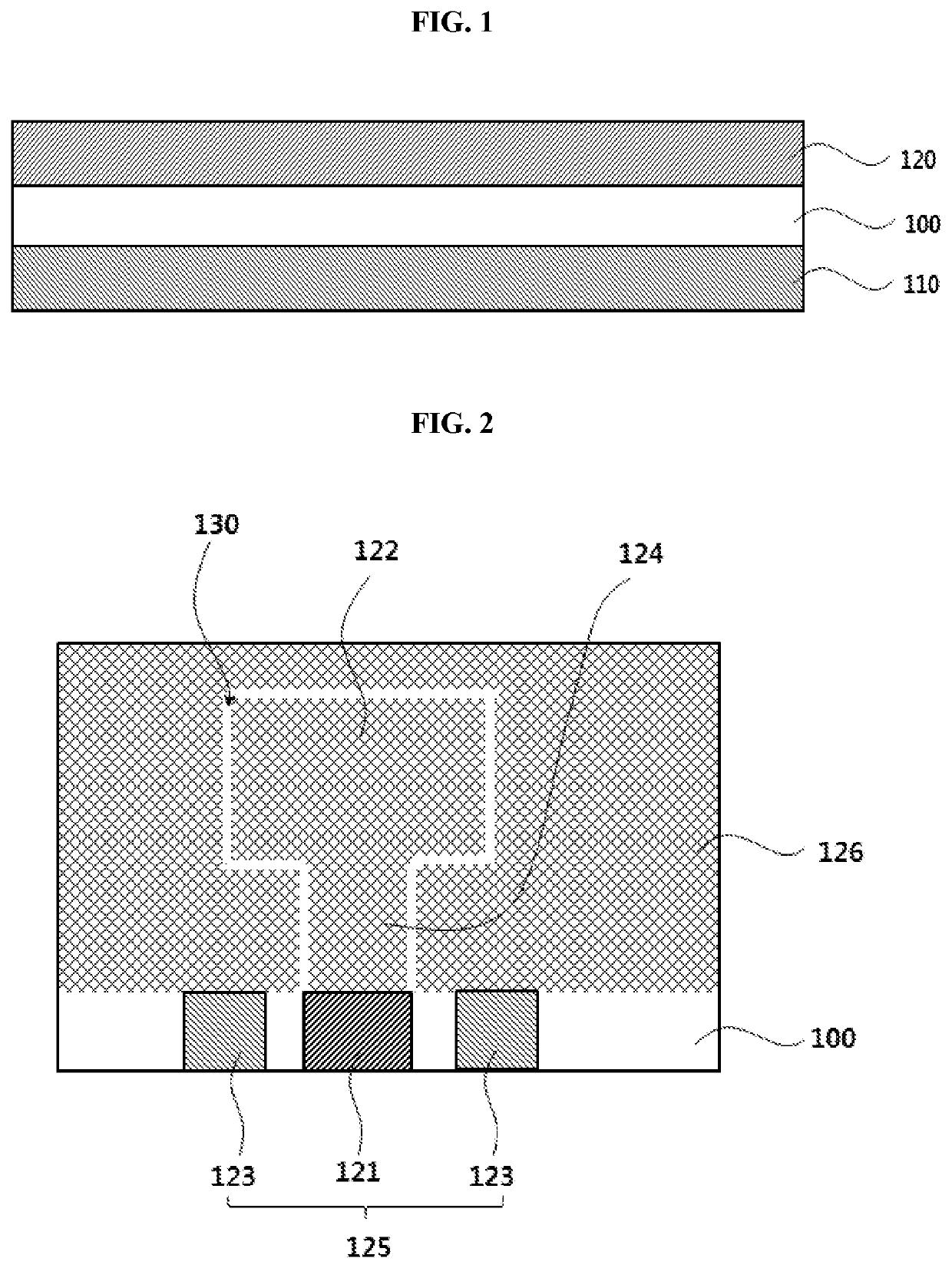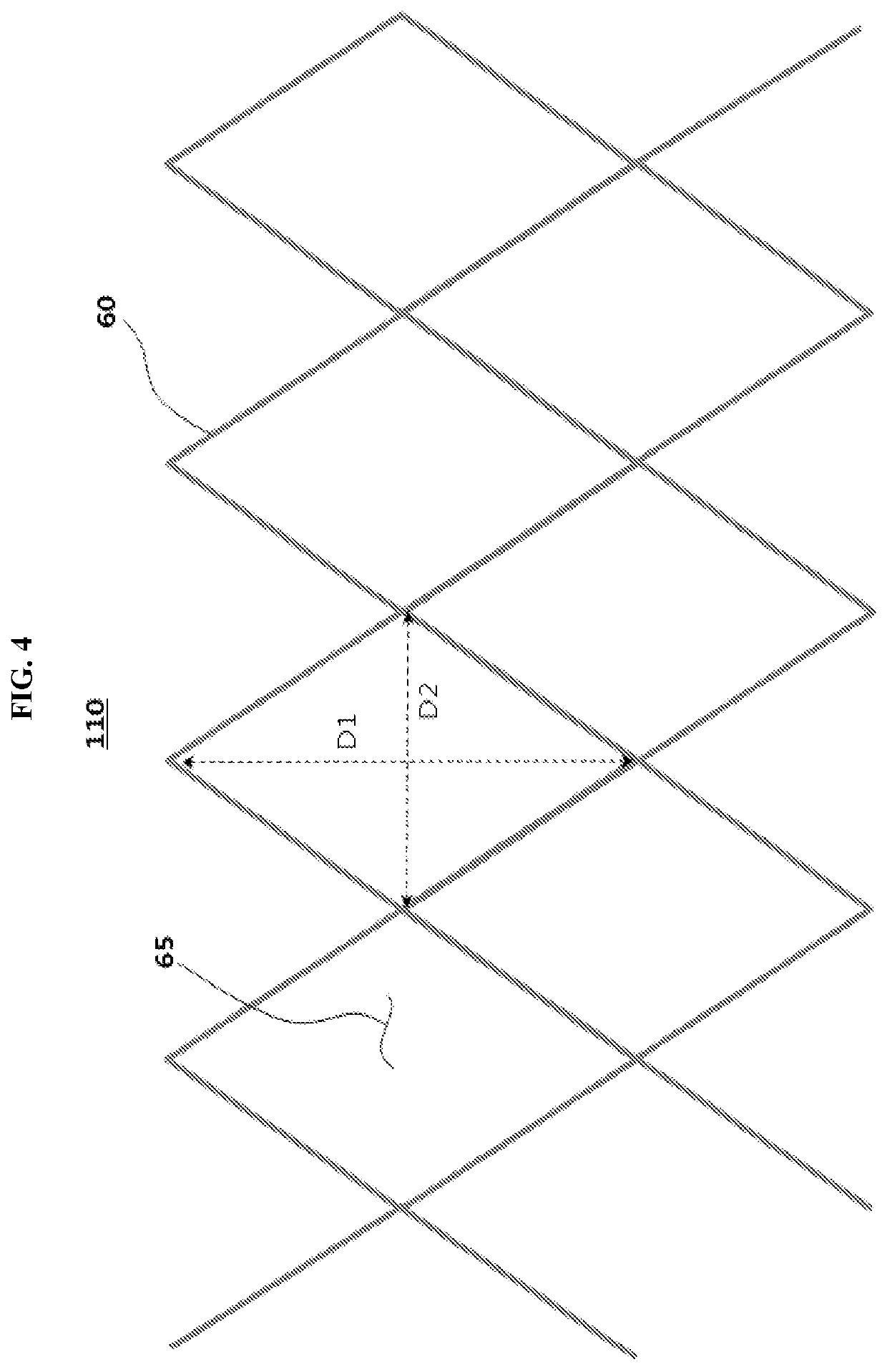Antenna device and display device including the same
a display device and antenna technology, applied in the direction of resonant antennas, instruments, identification means, etc., can solve the problems of reducing the detection range of the antenna, so as to reduce the transmittance, increase the electrode recognition, and increase the electrode area
- Summary
- Abstract
- Description
- Claims
- Application Information
AI Technical Summary
Benefits of technology
Problems solved by technology
Method used
Image
Examples
example 1
[0100]A first electrode layer and a second electrode layer having a mesh structure on an upper surface and a lower surface of a glass dielectric layer (0.7 T) using an alloy (APC) of silver (Ag), palladium (Pd) and copper (Cu). An electrode line width was 3 μm and an electrode thickness (or a height) was 2000 Å in the mesh structure. A length of an X-direction diagonal line (a short diagonal line) was 200 μm and a length of a Y-direction diagonal line (a long diagonal line) was 400 μm in a rhombus unit cell included in the first and second electrode layers. As illustrated in FIG. 5, the first electrode layer and the second electrode layer was aligned such that each unit cell was divided into four uniform sub-cells.
example 2
[0101]An antenna device was prepared by the same method as that of Example 1 except that a length of an X-direction diagonal line (a short diagonal line) was 300 μm and a length of a Y-direction diagonal line (a long diagonal line) was 600 μm in a rhombus unit cell included in the first and second electrode layers.
experimental example
[0103](1) Evaluation of Antenna Driving Properties
[0104]A feeding was performed to the antenna devices of Examples and Comparative Example so that the first electrode layer served as a radiator and the second electrode layer served as a ground electrode. Parameters relating to antenna properties (S11, Re(Z), Im(Z), Gain, Directivity, Radiation efficiency) were measured using Vector Network Analyzer (MS4644B manufactured by Anritsu) and a radiation chamber. The results are shown in Table 1 below (※ Radiation efficiency (%)=(Gain / Directivity)*100).
TABLE 1RadiationResonanceDirec-Effi-FrequencyS11ReImGaintivityciency(GHz)(dB)(Z)(Z)(dBi)(dBi)(%)Example 26.97−7.4 25.4022.895.797.6475.781Example 26.65−6.3521.7922.725.767.3378.582Comparative26.97−6.4324.9428.985.617.5374.51Example
[0105]Referring to Table 1, when the mesh structures were staggered as in Examples, the antenna properties were substantially maintained without excessive change or degradation.
[0106](2) Evaluation of Transmittance...
PUM
 Login to View More
Login to View More Abstract
Description
Claims
Application Information
 Login to View More
Login to View More - R&D
- Intellectual Property
- Life Sciences
- Materials
- Tech Scout
- Unparalleled Data Quality
- Higher Quality Content
- 60% Fewer Hallucinations
Browse by: Latest US Patents, China's latest patents, Technical Efficacy Thesaurus, Application Domain, Technology Topic, Popular Technical Reports.
© 2025 PatSnap. All rights reserved.Legal|Privacy policy|Modern Slavery Act Transparency Statement|Sitemap|About US| Contact US: help@patsnap.com



